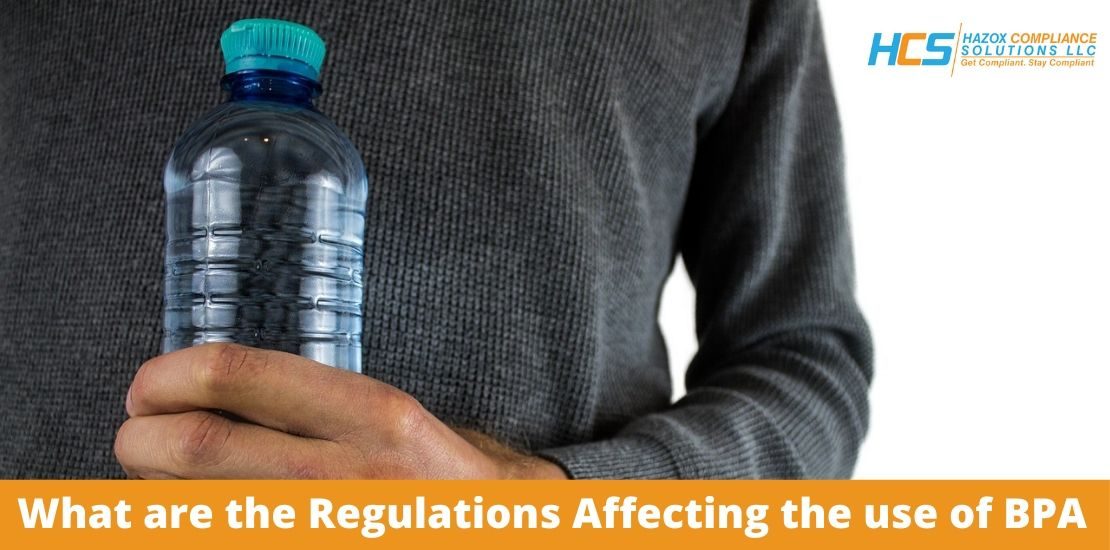- February 28, 2020
- Posted by: admin
- Category: Blogs

Bisphenol A (BPA) is a chemical with estrogenic effects that are widely used in everyday consumer products such as plastic bottles, cash register receipts, can coatings and many others. For more details, please see our article on the BPA market where we explore this topic in more detail ( https://www.hazoxinc.com/bisphenol-a-and-how-it-affects-out-health/ ). Most of our exposure to this chemical comes from eating canned food. The epoxy coating that helps protect the food from bacterial contamination by forming a seal around it, unfortunately creates another problem, as BPA can leach out of this coating, making its way into the food and eventually end up in our bodies(https://ej4all.org/assets/media/documents/BPA%20BuyerBewareFINAL.pdf).
Regulations have been sought for many years, but many interests –some purely economic—have prevented laws from being introduced that prohibit the use of this substance in all containers that come into contact with the food we eat.
In 2005, state legislation was introduced for the first time in California, to regulate BPA in food packaging more strictly. Since then, more than 30 states and localities have introduced policies to ban or restrict BPA (https://www.bcpp.org/resource/bpa-laws-and-regulations/).
The first state to pass a ban on BPA in any product was Minnesota in 2009, followed by Connecticut. To date, a total of thirteen states have adopted policies to regulate the use of BPA in consumer products. These states have adopted policies focused on regulating BPA in baby bottles and sippy cups. However, some states have taken stronger steps and have also eliminated BPA from cans of infant formula, baby food packaging, sports water bottles, and even thermal paper for payment receipts.
More recently, in 2015, the California EPA included BPA in the list of substances toxic to reproduction subject to regulation under Proposition 65, which requires that consumer products containing BPA carry a warning label if levels exceed the level considered “safe”. (https://www.p65warnings.ca.gov/fact-sheets/bisphenol-bpa) In addition to the obligation to report directly on the contents of this substance, manufacturers must also keep information on BPA packaging up to date in a public access database.
At the federal level, the FDA banned BPA from baby bottles and sippy cups beginning in December 2012, (https://www.nytimes.com/2012/07/18/science/fda-bans-bpa-from-baby-bottles-and-sippy-cups.html) and from infant formula packaging beginning in 2013 in response to numerous citizen requests.
At the international level, efforts to regulate BPA have also been observed. On 14 February 2018 the European Union published a regulation restricting the use of BPA in certain food contact materials. The Commission Regulation (EU) 2018/213 introduced a specific migration limit (SML) for BPA in varnishes and coatings that are intended to come into contact with food, and also updated the existing limits for BPA in the plastics industry (https://www.packaginglaw.com/news/new-eu-regulation-sets-bpa-limit-food-contact-varnishes-and-coatings-and-reduces-limit-bpa-food).
France is a pioneer in specifically seeking to ban BPA in food can coatings and banned its use in all food packaging from 2015 and in infant food packaging from 2013. (https://www.foodpackagingforum.org/news/france-bans-bpa) Denmark has bannedBPA in food contact materials for children 0-3 years of age (baby bottles, cups and food packaging for infants). This ban entered into force on 1 July 2010. Belgium also banned the use of BPA in food contact materials intended for children up to 3 years of age from 2013 (https://www2.mst.dk/Udgiv/publications/2014/03/978-87-93178-18-2.pdf).
On Monday 24th, we will be looking at storing, handling and disposing of BPA safely.
On Tuesday 25th, we will look at occupational exposure data for BPA, first aid measures when exposed to BPA and suitable personal protective equipment when using BPA.
On Wednesday 26th, we will look at fire precautions when using BPA
On Thursday 27th, we will look at the effects of BPA in the environment
In the last of this series, on Friday 28th , we will look at alternatives to BPA.
If you have missed the first article in the series, where we introduced you to the chemical BPA, you can catch up here (https://www.hazoxinc.com/bisphenol-a-an-old-chemical-with-new-restrictions/). We have also looked at the history of BPA (https://www.hazoxinc.com/bisphenol-a-almost-130-years-old-and-still-very-much-in-demand/) and how BPA is used in the marketplace (https://www.hazoxinc.com/bisphenol-a-can-one-product-have-so-many-uses/). Yesterday’s article looked at the health effects of BPA (LINK).
If you liked our article, please give us a Like and follow us on:
Facebook: https://www.facebook.com/HazoxComplianceSolutions
Twitter https://twitter.com/Hazox_Inc
LinkedIn https://www.linkedin.com/company/hazoxcompliancesolutions
Youtube: https://www.youtube.com/channel/UCIeBucyOUEtQFSAymS3TwQQ
